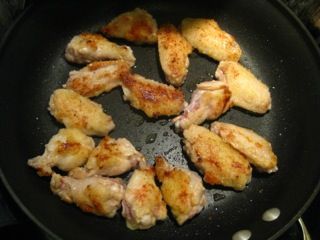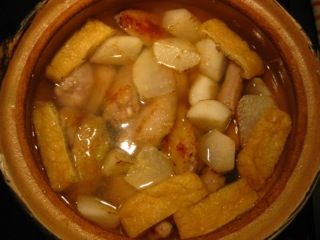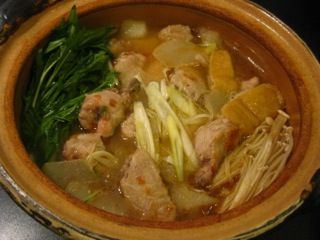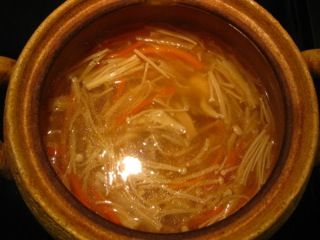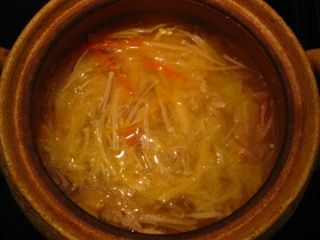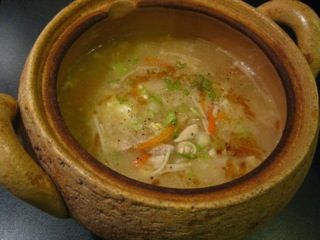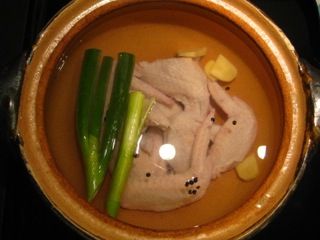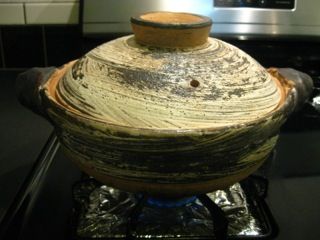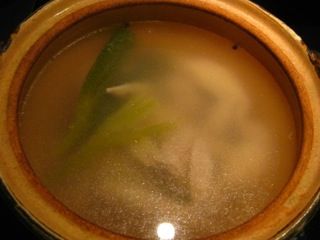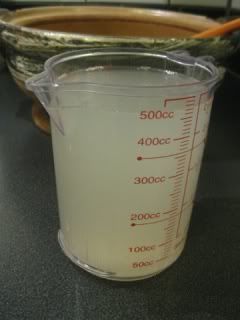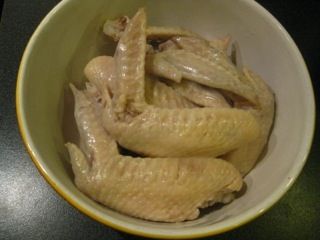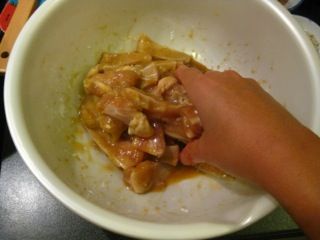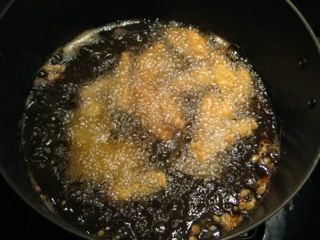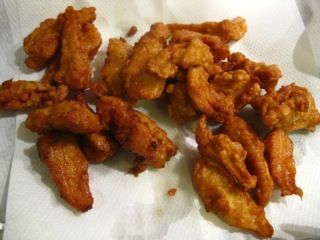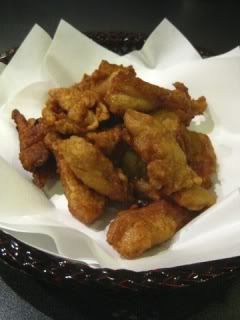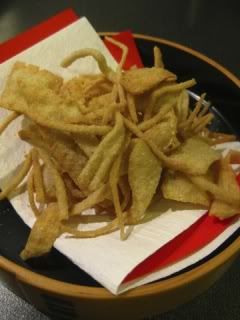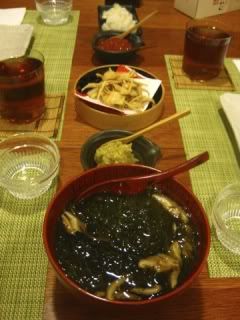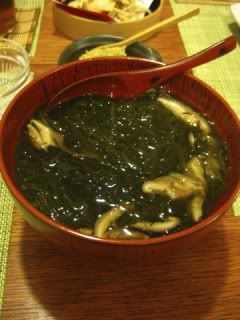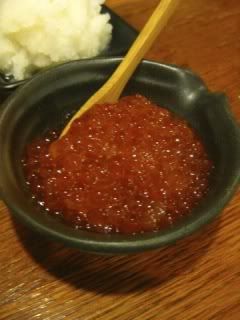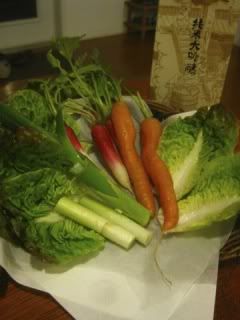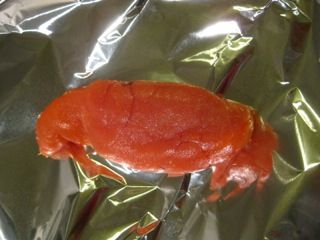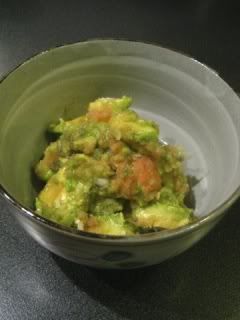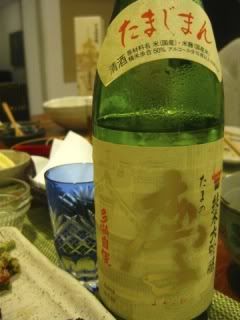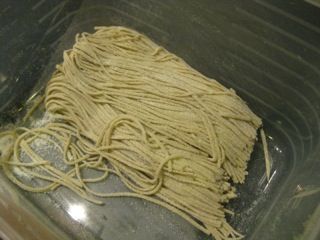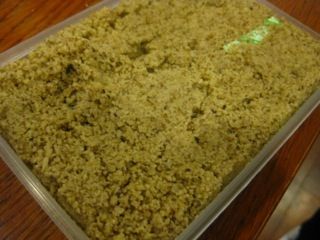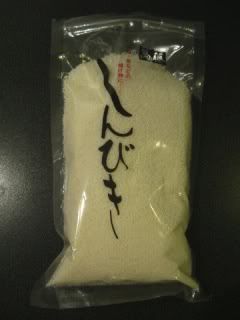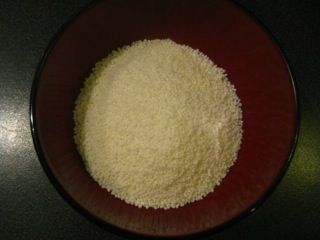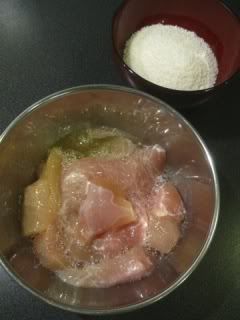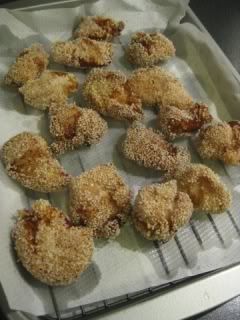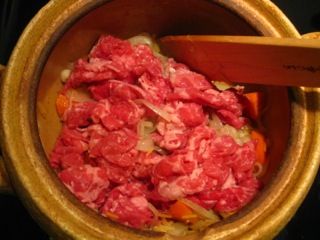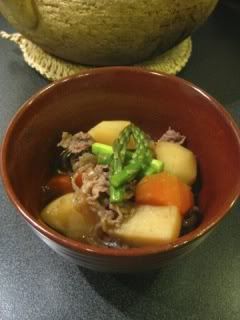I used classic-style donabe, "Hakeme", to make it.


Napa cabbage and fried tofu pouch ("abura age") are piled in donabe, and chicken wings (pan-fried until brown) are added. Dashi stock was poured and simmered.

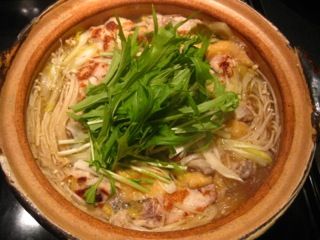
Once everything is nicely cooked, enoki mushrooms and Tokyo negi are added. To finish, mizuna leaves and yuzu rind are added.
Shio-koji Chicken Wings & Napa Cabbage Hot Pot
Ingredients: (4 servings)
18 oz (500 g) chicken wings (drummettes and mid section)
1 1/2 tablespoons shio-koji (or 1 teaspoon salt)
14 oz (400 g) Napa cabbage, cut into 1.5" (4 cm) strips
1 knob ginger, sliced into thin shreds
1 piece rectangular fried tofu pouch ("abura-age"), blanched and cut into 8 strips
2 cups (480 ml) dashi stock
potato starch ("katakuriko")
1 tablespoon olive oil
2 cups (480 ml) dashi stock
2 tablespoons sake
1 tablespoon light color soy sauce ("usukuchi shoyu")
1/4 teaspoon salt
1 oz (30 g) glass noodles, cut into 4" (10 cm) or shorter
5 oz (150 g) enoki mushrooms
1 Tokyo negi (Japanese green onion) or 3 scallions, white part only, thinly-sliced diagonally
5 oz (150 g) mizuna, cut into 2" (5 cm) length
1 teaspoon sesame oil
1 teaspoon, sliced yuzu citrus rind
some sansho pepper powder
some sansho pepper powder
Procedure:
- Rinse the chicken in cold water and pat-dry with paper towel throughly. In a bowl, combine the chicken and shio-koji. Mix well by hand. In a bowl, combine the chicken and shio-koji. Mix well by hand. Cover tightly and refrigerate overnight (or at least 2-3 hours).
- In the donabe, make a pile of Napa cabbage, and add the ginger and fried tofu pouch in layers. Set aside.
- Combine the chicken with the potato starch, and mix well by hand.
- Heat the olive oil in a sauté pan over medium heat. Add the chicken pieces and and cook until the bottom sides are golden (2-3 minutes). Turn them over and cook for another minute or so. Transfer the chicken to the donabe.
- Add the dashi stock and sake into the donabe, and set over medium-high heat. Bring to a boil and reduce the heat down to simmer. Skim as necessary, meanwhile.
- Place a drop lid (or line the surface with a piece of parchment paper). Cover with lid and simmer over medium-low heat for 15 minutes.
- Add the soy sauce, salt, glass noodles, enoki mushrooms, and thinly-sliced white part of Tokyo negi. Cover again and continue to simmer for additional 5 minutes.
- Add the mizuna and cook for 1 minute.
- Drizzle the sesame oil and sprinkle sliced yuzu rind.
- Divide into individual bowls and serve with some sansho pepper powder.
Happy donabe life.


